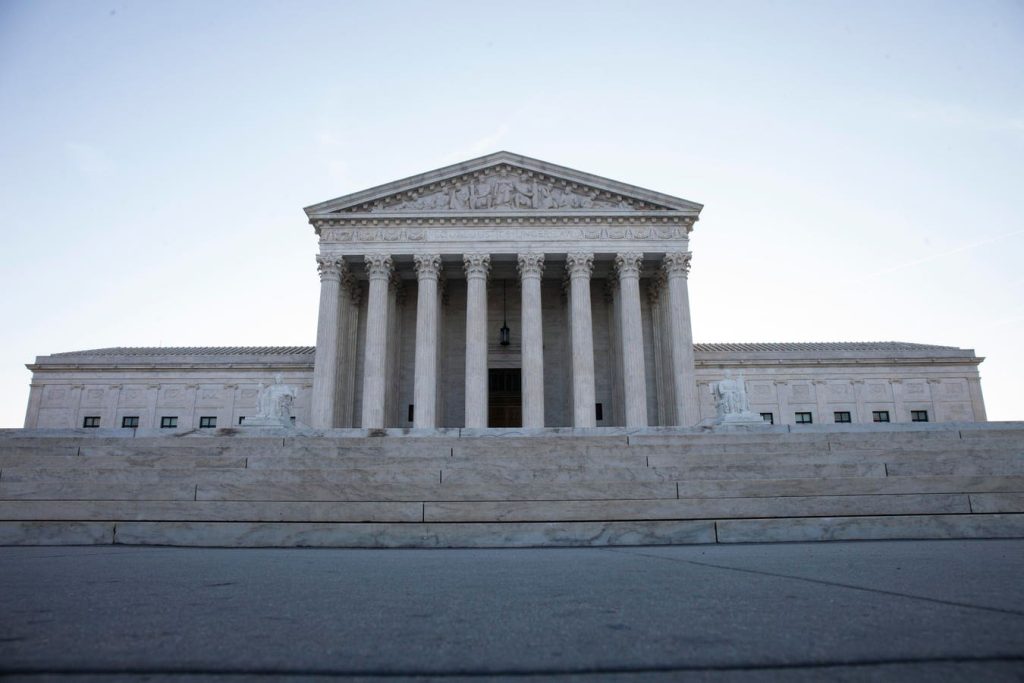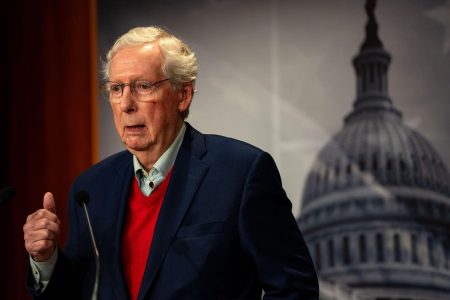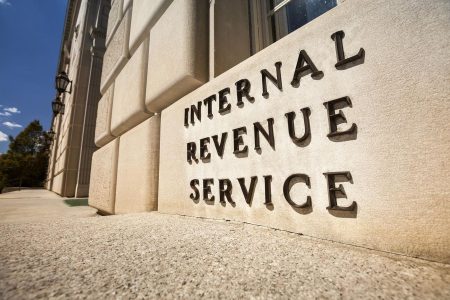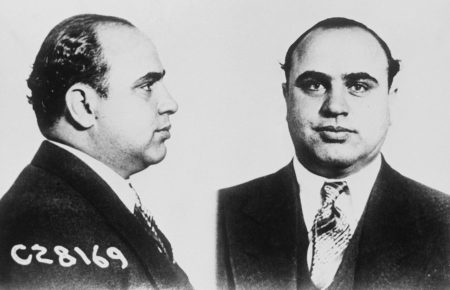Tax Notes contributing editor Marie Sapirie discusses the recent Supreme Court decisions overturning Chevron and defining the statute of limitations period and their potential impact on the future of tax litigation.
This transcript has been edited for length and clarity.
David D. Stewart: Welcome to the podcast. I’m David Stewart, editor in chief of Tax Notes Today International. This week: fueling challenges.
The Supreme Court just finished its term with a number of opinions with implications for tax policy. We’ve previously covered the Moore decision, which we’ll link to in the show notes. Today, we’re looking at the decisions that did away with the Chevron doctrine and what that may mean for the tax world.
Here to talk more about this is Tax Notes contributing editor Marie Sapirie. Marie, welcome back to the podcast.
Marie Sapirie: Thanks for having me.
David D. Stewart: So let’s start off with the Loper Bright case. Could you give listeners a brief reminder of what this case is about?
Marie Sapirie: This case was about whether to keep Chevron deference or not. The origin of the case are the rules that the National Marine Fisheries Service (NMFS) tried to apply to Atlantic herring fishermen, so it’s not a tax case. There were two sets of fishermen: Loper Bright Enterprises helmed the first one, and the other group of fishermen owns two vessels, the fishing vessel Relentless and the Persistence — names which are poetically suited to both the history of their case and what this case represents more broadly.
So NMFS has a delegation from the secretary of commerce to administer a fishery conservation and management act, referred to as the MSA. The MSA established regional councils, and those regional councils develop fishery management plans, which NMFS then approves and promulgates as final regulations. Under the MSA, one aspect of the plans was that observers could be required to be carried on board a fishing vessel to collect data for conservation and management of fish, and that in a handful of specific situations, the fishing vessel owner had to cover the costs of the observer. The Atlantic herring fishermen weren’t included in those.
Prior to 2013 the NMFS had been paying for the observers for the Atlantic herring fishermen. But in 2013 the NMFS worried that federal funding for the program might dry up and decided to amend the plans to require that in that case, the Atlantic herring fishermen would pay the costs of the observers. And a rule to that effect was promulgated several years later. The costs per day for an observer were steep — it was up to $710, which took a sizable piece out of the fishermen’s revenue, and they objected to that. They brought suit, arguing that the MSA doesn’t authorize NMFS to require them to pay for the observers, and both district courts rejected their arguments, saying that the NMFS was due deference under Chevron for its interpretation of the MSA.
The D.C. Circuit and First Circuit both affirmed, cited Chevron again, and the D.C. Circuit got to step two of the Chevron analysis and held that the NMFS’s interpretation was reasonable, while the First Circuit applied Chevron but didn’t say what step was the basis for its decision. The Supreme Court granted cert to decide only the question of whether Chevron should be or clarified.
David D. Stewart: So let’s get into that a little bit. So what is the Chevron doctrine?
Marie Sapirie: The Chevron doctrine goes far beyond the 1984 case that it bears the name of. But in brief, it stands for the idea that sometimes a court has to defer to an agency interpretation of a statute if the interpretation is reasonable, even if the court thinks that another interpretation is better. There are two steps, in brief, for Chevron deference, and this is a bit of a simplification. But first, the court decides whether Congress has directly spoken to the precise question at issue. And second, if Congress was silent or ambiguous on that issue, the court has to defer to the agency interpretation if it’s based on a permissible construction of the statute.
The court in Loper Bright decided to overturn Chevron because it can’t be reconciled with the Administrative Procedure Act, which predated Chevron by almost 40 years. And the APA says, in relevant part, that the reviewing court shall decide all relevant questions of law, interpret constitutional and statutory provisions, and determine the meaning or applicability of the terms of an agency action. The Supreme Court decided that that conflicts with the idea of deference to agency actions that has been built up after Chevron was decided, so Chevron had to go.
The result is that courts are now back to where they were before Chevron, and the majority opinion instructs them to find the best reading of disputed statutory language. There’s one additional point to note, and that’s the discussion of express delegations of authority to agency in the statute. This has particular relevance for tax because the tax code includes many instances where Congress says that the Treasury or IRS shall prescribe such regulations or other guidance as may be necessary or appropriate to carry out the purposes of the section.
In Loper Bright the majority opinion says that if the best reading of the statute is that it delegates discretionary authority, then the reviewing court’s role under the APA is to independently interpret the statute and effectuate the will of Congress. The reviewing court does that by determining the boundaries of the delegated authority and making sure that the agency is engaged in reasoned decision-making within those boundaries. The practical effect for tax regulations may be that although Chevron deference doesn’t apply anymore, those delegations throughout the code could have a similar effect. But we’ll have to wait for the courts to work through those issues to have more clarity on that.
As a practical matter, unfortunately for the fishermen, this means that they really will have to be relentless and persistent now, because the result is that their cases go back to the district courts.
David D. Stewart: OK, so there’s also this second case that was tied to Loper Bright. Could you tell us about Corner Post?
Marie Sapirie: Sure. Corner Post addressed the question of when a claim brought under the APA accrues for purposes of section 2401(a) of title 28. As that title of the U.S. code makes clear, this isn’t a tax case either, but it does have big implications for tax because tax regulations can be challenged under the APA. The plaintiff, Corner Post, is a truck stop and convenience store in North Dakota that was incorporated in 2017 and opened in 2018. We need to keep those dates in mind because we’ll come back to them in the course of thinking about this case.
Corner Post takes payments for its goods and services via, among other methods, debit cards, but payments made using debit cards incur interchange fees imposed by banks. Back in 2010 Congress thought the interchange fees needed to be regulated and assigned the task of setting standards to the Federal Reserve.
The Federal Reserve then made a rule setting the maximum interchange fee and published it in 2011. Shortly after that rule came out, a different plaintiff brought suit — because Corner Post didn’t exist at that point — arguing that the Federal Reserve’s rule is unlawful because it allows higher interchange fees than the statute Congress passed permits. They prevailed in the district court, and then they lost in the D.C. Circuit.
Then in 2021 Corner Post joined a lawsuit alleging that the Federal Reserve violated the APA and promulgated that same rule. The District Court dismissed the suit as barred by the six-year statute of limitations in section 2401(a), and the Eighth Circuit affirmed. That exacerbated a circuit split that had already arisen, with some circuits holding that if an APA challenge is facial, then the statute of limitations begins to run on the date of the final agency action, and other circuits holding that it starts when the plaintiff suffers an injury, no matter when that injury occurs.
David D. Stewart: How did the Supreme Court come down on this case?
Marie Sapirie: The court held that the six-year statute of limitations in section 2401 of title 28 begins to run when the plaintiff suffers an injury whereby they could satisfy one of the limitations on judicial review, such as standing or finality, rather than when the final rule at issue was promulgated. That’s a big deal for tax as well, because plenty of the regulations that apply to taxpayers are more than six years old, and sometimes the regulations are many decades old. Now that it’s clear that the statute of limitations in section 2401 starts to run when there’s an injury, that opens up many more regulations to challenge, even long after they’ve been promulgated.
That said, one thing we don’t know yet and won’t have certainty on until a case presents it is whether the reasoning of Corner Post extends to the Anti-Injunction Act, which generally bars pre-enforcement challenges to tax statutes and regulations. One possibility is that until the Anti-Injunction Act requirements have been satisfied, the section 2401 limitation won’t apply to prevent APA-based challenges to tax regulations. On that point, the opinion in Corner Post said that section 2401(a) embodies the plaintiff-centric traditional rule that a statute of limitations begins to run only when the plaintiff has a complete and present cause of action.
So comparing the text of section 2401 and the text of section 7421 of the tax code, the latter could be characterized in a similar way.
David D. Stewart: So with these two cases coming down, I’ve heard some discussion about an older case called Skidmore. Could you tell us about that?
Marie Sapirie: Skidmore was a case from long before Chevron; it was decided in 1944, and it discussed how courts should view what they called rulings, interpretations, and opinions of agencies. And it said that the agency’s interpretation isn’t controlling upper courts, but it can be informative. The Court said that the weight of the agency’s interpretation depends on the thoroughness evident in its consideration, the validity of its reasoning, its consistency with earlier and later pronouncements, and all those factors which give it power to persuade if lacking power to control.
Today, this tends to be characterized as a form of respect rather than deference because the court in Skidmore said that policies and standards of an agency administrator may be entitled to respect even though they aren’t reached by trial in adversary form. But the exact contours of what that respect entails are probably something that the courts will have to think more about now.
David D. Stewart: Now, we’ve talked previously — before the decisions came out — about what overturning Chevron might look like, which we’ll link to those episodes in the show notes. But now that the decision has come out, what kind of impact has it had?
Marie Sapirie: The immediate impact of Loper Bright is fairly limited, at least in the tax context, but it does seem that Corner Post will probably have a more immediate effect on litigation. The overruling of Chevron has already come up in filings in current cases, and even in at least one district court opinion so far. But for the most part, it’s going to take some time before we really see any impact.
When I spoke to professor Kristin Hickman at the University of Minnesota Law School, she noted that although Loper Bright represents a major doctrinal shift, we can’t know yet what the effect will be on the outcome of litigation challenging tax regulations. It could certainly be that when challenges are brought, the courts will frequently think that the best readings of the statutes are the ones that Treasury and the IRS have come up with. And the Court’s point about congressional grants of discretionary authority is likely to play a relatively large role in challenges to tax regulations because Congress has made a habit of including those specific grants of authority to write guidance to Treasury and the IRS in legislation.
David D. Stewart: Do these cases have separate impacts on tax rules and litigation?
Marie Sapirie: Taking the tax rules first, there probably won’t be an immediate change in how Treasury and the IRS go about rulemaking and issuing guidance, but it might have an effect on the timing of it. Treasury and the IRS have been much more expressly trying to adhere to the APA requirements and promulgating regulations recently, as evidenced by the extensive considerations of comment letters that appear in the preambles to final regulations. But the loss of Chevron deference may mean that the government tries to be even more careful to make it clear that the reasoning behind the regulation is the best reasoning. So that could slow down the process, particularly in the short term.
As for the litigation over regulations, that is likely to increase. Justice Jackson’s dissent in Corner Post is widely quoted for her prediction that these cases would bring a tsunami of litigation. Taxpayers who object to the way that a regulation was drafted don’t have to contend with Chevron deference anymore. And if the prediction about how the Anti-Injunction Act interacts with the section 2401 statute of limitations is correct, then there are more regulations that are potentially open to challenge. We’ll just find out soon.
David D. Stewart: Well, I assume this is going to leave a lot for us to cover going forward. Marie, thank you so much for being here.
Marie Sapirie: Thanks for having me.
Read the full article here
















